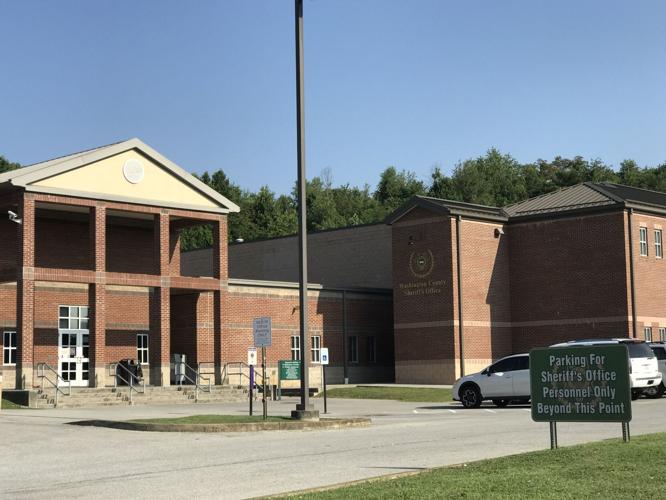The use of deadly force by law enforcement officers across Northeast Tennessee is regulated and defined by local police departments and their policies.
The Washington County Sheriff’s Office and the şÚÁĎĘÓƵ Police Department provided each of their written regulations regarding deadly force, giving a breakdown of when and how officers can apply the policy while working in the field and the limitations on what the policy permits.
The Kingsport Police Department, Sullivan County Sheriff's Office and Hawkins County Sheriff's Office spoke to Six Rivers Media reporters on how they handle the use of deadly force.
Washington Co. Sheriff’s Office
The Washington County Sheriff’s Office has a policy that states the following: “Officers may use deadly force only when the officer reasonably believes the action is in defense of any human life in imminent danger of death or serious bodily injury.”
The policy references TCA 39-11-620 and Tennessee v. Garner, 471 U.S. 1 (1985) that addresses the use of deadly force by a law enforcement officer to effect an arrest. Labeled as subsection (a), it states a law enforcement officer, “after giving notice of the officer’s identity as such, may use or threaten to use force that is reasonably necessary to accomplish the arrest of an individual suspected of a criminal act who resists or flees from the arrest.”
Subsection (b) of this policy also stated the officer may use deadly force to “effect an arrest only if all other reasonable means of apprehension have been exhausted or are unavailable, and where feasible, the officer has given notice of the officer’s identity as such and given a warning that deadly force may be used unless resistance or flight ceases.”
General Order 4.1 of the Washington County Sheriff’s Office policy, page 7, also gives two reasons of “probable cause” an officer can have to inflict deadly force protocols:
- The officer has probable cause to believe the individual to be arrested has committed a felony involving the infliction or threatened infliction of serious bodily injury or;
- The officer has probable cause to believe that the individual to be arrested poses a threat of serious bodily injury, either to the officer or to others unless immediately apprehended.
The protocol also mentions the use of deadly force being acceptable during the time of an officer shooting at or from a moving vehicle, stating, “Officers are prohibited from discharging firearms at or from a moving vehicle, including motorcycles or bicycles, unless officers reasonably believe deadly force is necessary to defend the officer or a third person from the use, or imminent use, of deadly force.”
Additionally, the policy gives a list of blows to be avoided “unless the officer’s life or the life of another person is endangered.” These moves include knuckle blows to the temple, base of hand blows to the nose, cupped hand blows to the ears, kicks to the groin or head area, blows or gouges to the eyes and vascular neck restraint or chokehold.
Kingsport, Sullivan County
Kingsport police and Sullivan County deputies follow similar rules on when deadly force is permitted, with policies shaped by federal law and reinforced through yearly training.
Both the Kingsport Police Department and Sullivan County Sheriff's Office base their policies on the U.S. Supreme Court’s 1989 decision in Graham v. Connor, which established the “objective reasonableness” standard for evaluating police use of force.
“It basically defines what is objectively reasonable given a certain set of circumstances,” said KPD Public Information Officer Brandon Arnold. “That’s what we use to determine a lot of use-of-force guidelines.”
According to KPD policy, deadly force is authorized only when it is objectively reasonable for a lawful purpose, such as defending life or preventing serious bodily harm. The policy emphasizes that preserving life, including an officer’s own, is paramount.
Training on these standards begins at the police academy, Arnold said, and is refreshed annually.
Officers undergo yearly instruction that covers the use of force and also de-escalation tactics, which are efforts to resolve a violent situation before deadly force has to be used.
“Can we back off and use something less lethal? Words, tasers, pepper spray, physically restraining — all of those are preferred over deadly force,” Arnold said. “Words are one of the most powerful tools we have.”
Sullivan County Sheriff Jeff Cassidy echoed that approach.
“We always advise verbal persuasion and instructions before resorting to force,” Cassidy said. “If you have time, and your tactics allow it, we want to talk them down. It’s about minimizing injury to the officer and the subject.”
Cassidy said sheriff’s deputies also undergo annual training that includes scenario-based exercises, stress courses and policy reviews. Deputies sign off each year acknowledging they understand the department’s use-of-force protocols
Deadly force, Cassidy said, is only justified when there is an imminent threat of serious injury or death to the officer or others.
“Graham v. Connor sets the standard we follow,” Cassidy said. “Officers have the right to protect life and property, but they must do so using only the amount of force that is objectively reasonable,” Cassidy said. “That means controlling a situation, making an arrest, or defending themselves or others without violating anyone’s civil rights.”
The SCSO also utilizes de-escalation tactics often, Cassidy said, which deputies receive training every day.
“We talk people down every day, from a knife, a gun, those don’t get reported,” Cassidy said. “But it happens every day.”
şÚÁĎĘÓƵ Police Department
The şÚÁĎĘÓƵ Police Department’s deadly force policy is found in their General Order Standard Operating Procedures information packet, which is reviewed annually. It defines deadly force as “force which is reasonably likely to cause death or serious bodily injury.”
Found on page 12 of the packet is the information regarding the deadly force policy. It states an officer is “justified in using deadly force only under the following circumstances,” listing the following subsections:
- (a.) Deadly force is permissible only when the officer has reasonable belief that the action is necessary in the defense of human life or necessary in the defense of any person in imminent danger of serious bodily injury.
- (b.) Deadly force is permissible only when there is an imminent and immediate danger of death or serious bodily injury to the officer or other persons present and that danger is caused by the aggressive actions of the suspect.
- (c.) Officers shall not draw their weapons unless there is sufficient justification. In effecting the arrest of potentially dangerous suspects or in high hazard situations, officers may draw or display a firearm for the purpose of obtaining and maintaining control of the situation.
- (d.) No distinction shall be made relative to the age of the person who is the intended target of deadly force. Self-defense and an imminent and immediate threat shall be the guidelines for employing deadly force.
Along with listing the justifications for an officer using deadly force, the policy also gives the limitations. The policy states, “Justifications for the use of force is limited to the facts known or perceived by the officer at the time such force is used, including but not limited to, levels of resistance, behavioral cues, the ratio of officers to offenders and the availability or proximity of back up.”
The limitations lists deadly force not being permissible to stop “a non-violent fleeing felon or misdemeanant, or to protect property per the 1985 Supreme Court decision in Tennessee v. Garner.” Similarly to the Washington County Sheriff’s Office policy, there is also a limitation for shooting at or from a moving vehicle, which is “prohibited in all instances” except in circumstances governed by aforementioned subsection (b).
The limitations also prevent officers from firing warning shots, and states “per Tennessee Code Annotated 38-3-121, Use of Chokeholds, the use of chokeholds or vascular next restraints are prohibited unless the situation rises to that of a deadly-force standard.”
The policy also asserts that an officer should, “if possible, give oral notice of a warning of the intention to use deadly force,” and they are prohibited “from drawing or pointing firearms at or in the direction of a person unless an objectively reasonable determination is made that deadly force is, or could be, authorized” as outlined in the policy.
Hawkins County
Chief Deputy Tony Allen of the Hawkins County Sheriff’s Office said their office uses the “force continuum” to determine whether using deadly force is necessary.
“Deadly force meets deadly force,” Allen said.
An officer’s options before deadly force is used includes: officer presence, orders and commands, less lethal force - taser, pepper spray, baton - and then deadly force.
After deadly force is used, the Tennessee Bureau of Investigation is called to investigate the incident, after that procedure is a case-by-case basis on whether the officer is suspended during the investigation or not.
It has been years since a Hawkins County officer used deadly force.













